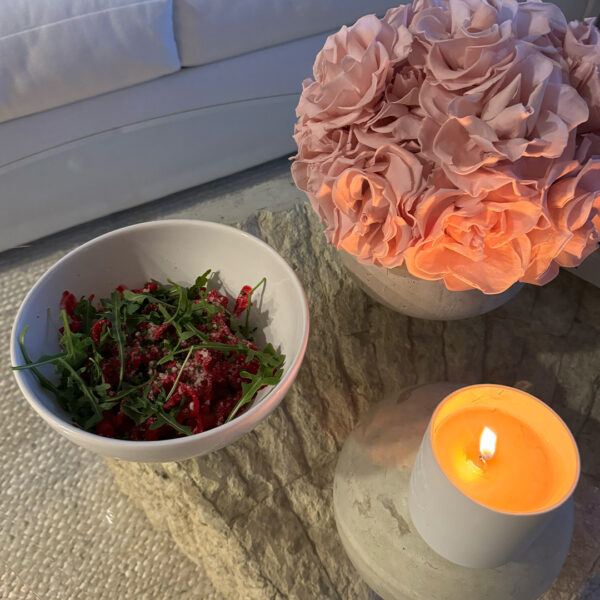Ever hear a nutritionist say you have to “eat the rainbow” (meaning: consume different-colored fruits and vegetables so you get a variety of nutrients)? I want people to start saying we need to “see the rainbow” and “feel the rainbow.” So, what does that mean?
I’m talking about a completely different rainbow—the one hidden in sunlight.
Sunlight can be split into the colors of the rainbow, like when it passes through a prism. Each color has a unique biological effect. And getting this sunlight into naked eyes and onto bare skin is foundational to our health. We need daily exposure to key colors of light in order to thrive.
What colors do we need and what do they do?
Infrared
From dawn onward, the colors that brighten our world from the sun come to us in a predictable fashion. Dawn is dominated by the infrared wavelengths of light. Infrared is soothing, anti-inflammatory, and transforms the water inside our body into its structured, energy-giving phase called EZ water.
As the sun breaks the horizon at sunrise, red light intensifies. Red light optimizes the health of our mitochondria, allowing them—the energy producers of our cells—to make more water and ATP as we start our day.
Shortly after sunrise, we get more blue light from the sun. The morning balance of red and blue light wavelengths turns on hormone centers in the brain. It signals our master steroid hormone—pregnenolone—to become cortisol (for energy) and/or estrogen, progesterone, or testosterone (for reproduction). This gives us a circadian boost of cortisol to energize us for the day.
When the sun reaches a little higher in the sky, UVA begins to appear and “brain magic” happens. When we get UVA light into our eyes, major changes take place. The light that enters our eyes controls hormone production, neurotransmitter balance, our microbiome, energy levels, hunger, metabolism, inflammation, libido, and more.
Light on our skin improves cardiovascular health, makes EZ water, makes vitamin D, boosts immunity, and more. We miss out on these frequencies by living indoors behind glass and under artificial light, which lacks all these key colors.
Here are a few ways we can get more of the benefits of sunlight:
- Exercise outside at sunrise [during this early, beneficial infrared time. Make sure to wear sunscreen when doing this at the highest UV hours of 10am-4pm.]
- Drive without sunglasses on and the sunroof open
- Work near an open window
- Schedule your first meeting of the day to be a phone call, and talk outside
- Sit outside for lunch
- Take “light breaks” throughout the day to sync up and soak up the healing light frequencies available
The best part about “consuming” light is that small, consistent exposures throughout the day can optimize our health in a profound way.
Want to get a different healing light directly on your skin? Try our favorite mask that’s able to deliver seven different light treatments.
Phototherapy 7-Colored LED Mask
Price: $199
Mirabella Beauty
Red light: Can help support increased blood flow and promote collagen.
Blue light: Aids in combating acne and tightening skin.
Yellow light: Can help reduce redness and smoothing the skin.
Green light: Aids in calming the skin and reducing inflammation.
Cyan light: Can help treat acne and brighten skin.
Orange light: Can help support even skin tone and help to reduce wrinkles.
Purple light: Can help improve skin vitality and lymph metabolism.
Carrie Bennet is an applied clinical nutritionist.
The content provided in this article is provided for information purposes only and is not a substitute for professional advice and consultation, including professional medical advice and consultation; it is provided with the understanding that Poosh, LLC (“Poosh”) is not engaged in the provision or rendering of medical advice or services. The opinions and content included in the article are the views of the author only, and Poosh does not endorse or recommend any such content or information, or any product or service mentioned in the article. You understand and agree that Poosh shall not be liable for any claim, loss, or damage arising out of the use of, or reliance upon any content or information in the article.
Up next, be the first to know our weekly content and sign up for our Poosh newsletter.




































